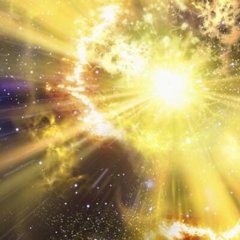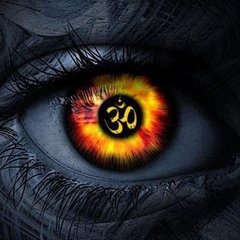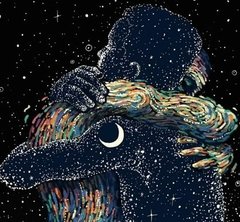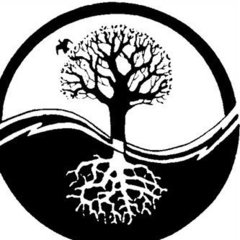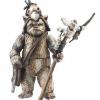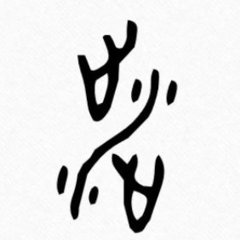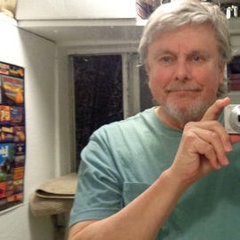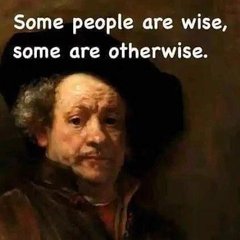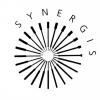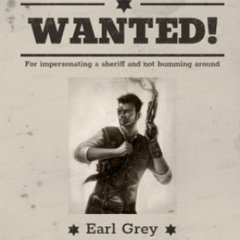Leaderboard
Popular Content
Showing most thanked content on 05/01/2024 in all areas
-
3 points
-
3 pointsI haven't come across yin devils or yang devils as categories, but my forays into taoist demonology weren't that comprehensive. Of course any demon, like any other phenomenon of the world of manifestations, can be classified as primarily yin or primarily yang, but they can also change their taiji allegiances. E.g., Sun Wukong, sometimes referred to as the "stone monkey demon," was imprisoned under the mountain for 500 years for, basically, being way too yang for anyone's comfort, and spent this long and boring time as an extremely yin entity. Whereas fox spirits (a rather well-explored category) are very yin to begin with -- until they flip into their aggressive yang manifestation. Taoist demonology and exorcism constitute a major part of the canon, not a footnote. They have their educated and trained professionals with different sets of qualifications, and detailed and specific "job descriptions." A very tongue-in-cheek analogy would be psychiatrists vs psychologists vs social workers, except what they do is not what a Western therapist would do. Taoist priests are "psychiatrists," Fashi (skillfull masters) are "psychologists," and spirit mediums are "social workers." And then there's sorcerers, those can be likened to undercover agents, and sometimes double agents.
-
2 pointsThe Yin Yang represents much more than just duality. People tend to miss the outer surrounding circle (or "taijitu" in this diagram, illustrating that the duality of the yin-yang in the center is surrounded by the "supreme ultimate" or "absolute". The Yin Yang diagrammatic representation is same as the Heart Sutra's "form is emptiness, emptiness form" and "two truths doctrine" representing the ever-changing nature of black/white duality inside the circle of the "absolute" as we'd also call it in Buddhism.
-
2 pointsThe essence of the Yijing as a book of wisdom and oracle is its ability to give an avenue for the Shenming (gods; or in Jungian terms, the unconscious) to communicate with us. Hence, finding an interpretation written in language which speaks to our heart is essential. In this regard my favourite is Cleary’s translation of Liu Yiming’s Daoist alchemical interpretation, titled The Taoist I Ching. Wilhelm’s is also a must have and I use it in conjunction with Cleary’s. However, for someone new to the Yijing I’d highly recommend starting with the relatively recent translation by John Minford titled, “I Ching: The Essential Translation of the Ancient Chinese Oracle and Book of Wisdom.” (You can preview it on Kindle.) It is excellent, both for the quality of his translation and selected commentary, and also for gaining an overview of what the Yijing represents. (Minford also includes a translation of the Bronze Age text from the Zhou dynasty in the second half of the book which @Harmen and @Taoist Texts are referring to above. TT may care to read it for its comprehensive exploration of the Western scholarship over the last few decades which explores in great depth exactly those issues which he raises. For me personally though, this stuff has little relevance for how I use the book. I agree with Minford when he writes, “Modern attempts to divest the original Bronze Age Oracle of all its traditional clutter, despite their brilliance, somehow seemed dry and futile. In short, I missed the essential spiritual quality of the I Ching.” In other words, it is exactly the layers of interpretation which the original oracle has gained over the ensuing centuries which give the book its wisdom. )
-
2 pointsThis look is different ..... the facial expression I mean . I'll add a caption ; " Did that arse hole deliberately cut off my lane change then ? "
-
1 point
-
1 point"Demon," "monster" and similar words may mean all sorts of things, different things to different people, but there's not a single ancient, indigenous, etc. tradition where they are not present. And even though we have been led to believe that their existence is somehow at odds with modern science, this in itself is merely a belief with no scientific proof -- because no scientific studies to tackle demons have ever been undertaken by modern science using its scientific method in any shape or form. For starters, scientists would have to agree on the terminology used. What is a demon? What is it that purportedly doesn't exist? I think a certain configuration of form and function can assume the distinct behavioral characteristics of a demon, and it can happen inside the human brain and the resulting mentality and emotionality -- what psychiatry of old called "complexes" -- but it can also shape itself into something made of microplastics, of xenohormones, of social trends tinged or thoroughly permeated with malevolent insanity, of frankenfoods and drugs... I think PTSD is a kind of demon, and glyphosate is, and Rockefeller medicine, and many aspects of child-rearing and education, and and and...
-
1 pointI'll share a nugget which personally I don't really believe, nonetheless it's interesting. I'm aware of two very accomplished professionals, one is a psychiatrist, the other is a Psy.D., both privately believe in demons ( publicly they don't ). They've both had about 50 years career tenures and are well respected. Interestingly both are very experienced in multiple personality disorder and both don't want to share (privately) anything about what strengthened this belief. This is a fringe view btw but it's interesting that two people very accomplished in these fields believe this. But to put their perspectives in context, as great qualifications don't make someone right. Tbh in the only incident I am familiar with, where one of the two experts seemed convinced something was demonic, there was absolutely nothing metaphysical, nevermind demonic. So my view is that probably their beliefs were created by past cases, where similarly they drew wrong conclusions aka they believed what unconsciously they wanted to believe. Still it's interesting as both seem very convinced, they're sharp and well versed in multiple personality disorder.
-
1 pointaka the "transcendent" in many schools that is beyond yet also within as the source of duality...
-
1 pointI remember trying to design a sheath for my jian just so that I could carry it on the back and draw from the back -- and be able to put it back in like that, which is a bit trickier. I couldn't figure out a design that would work, so I asked someone who makes sheaths semi-professionally, and she also failed. And that's when I learned that these swords were originally designed for horseback riding warriors -- and I don't mean the stance, I mean the actual horse. No problem to draw it from the back if you're so inclined -- but you have to mount a horse first. Or else use a shorter sword.
-
1 pointThank you. Are you aware in which texts from Daoist Canon is the Yin Devil discussed ? I would say that automatic reactions need a certain degree of self awareness to be recognised and even then it's not always possible, ie it is common for a lot of people to deny their automatic reactions even occurred. Changing them is not something which can be done alone, it's more of a process that can be done with an experienced therapist.
-
1 pointThe Yin Devil is usually no problem for normal people when their mind are cluttered by thousand and one things. One more devil won't cause too much additional harm. But for cultivators, especially higher level ones, when their minds are comparatively clearer, the Yin Devil is not easy to deal with. They are somewhat part of yourself. Cultivators need great steadiness naturally, but also require sound body and mind, and a proper environment. When a person is in distress, then the attack is vicious. There is another condition when the "real" devils i.e. external ones, affect you via the Yin Devil, instead of things like flying objects in the exorcist movies..
-
1 pointBoth and many other types. e.g. dark parts of our Psyche has a name, Yin Devil. It lurks in the sub-consciousness, can act on its own or triggered by feelings and events, very difficult to clear. The lesser called Yang Devil are those rogue deities and beings that befriend or harm humans. These are technically external species (or even aliens) that has a life of their own. Nothing to do with psyche. As to the "fallen" divine beings, there is an interesting thing in Taoism. It is the reverse or "rising" to-be-divine beings. Humans have alchemy to become Immortals which is semi-divine being. Animals can also achieve human form or even to become Immortals if they cultivate long enough. Snakes, turtles, very old fishes, foxes, bats are said to have this ability. So if someone catches a very big and old fish, they would let it go as believe it could have some sentient though not really immortal. But such happening is extremely rare.
-
1 pointNot exactly Vedanta but this is what “Hindupedia” has to say about similarities between “Hinduism” and Daoism: https://www.hindupedia.com/en/Daoism_and_Hinduism * Dialectical monism Dialectical monism, also known as dualistic monism or monistic dualism, is an ontological position that holds that reality is ultimately a unified whole, distinguishing itself from monism by asserting that this whole necessarily expresses itself in dualistic terms. Wikipedia
-
1 pointTaoism cultivation is manifold. The most common form is in fact accessing the mind through the body. Qigong/Neigong are this type - external body movements. Although the stress is for both mind and body to grow together, the earlier phases are more body centric as it is far easier, faster and wield immediate benefits, and importantly, easier to hold on to the interests of the students. And in the contemporary context, working through the body is more neutral, just like Hatha Yoga, without the person engage too much in Taoist philosophical and religious teachings, which enable people in other beliefs to follow e.g. Christians and Muslims, instead of asking them to worship different deities.
-
1 point
-
1 pointThats the tricky issue ... its NOT 'we' ( 'you' or these type of people ' , meaning transgender people ) its a strange 'type' that has infiltrated various things , not just 'transgenderism' . And they are already nuts , and its spreading into all types of areas .
-
1 pointWilhelm is standard still. I like Richard John Lynn - classic of Changes and also Alfred Huang (though it has its detractors).
-
1 pointMy home lies on top of me, it goes where I go. I am always home. - a snail.
-
1 pointHi, I have been lurking on Dao Bums for a while now and decided to make an account so i can ask questions and engage with the community. My interests include chi kung, martial arts, TCM and Ayurveda.
-
1 pointI remember checking that one as well yesterday but it's not what I'm looking for. Thanks for trying to help 🙏
-
1 pointHorse sense is the thing a horse has which keeps it from betting on people. W. C. Fields
-
1 pointCurrently reading Narcissus and Goldmund, by Herman Hesse. A good novel definitely.
-
1 pointAs far as favorites, I think that would have to be Maha-Parinibbana Sutta, because of a few things Gautama said in that sutta: (from Part Two: The Journey to Vesali) 32. ... What more does the community of bhikkhus expect from me, Ananda? I have set forth the Dhamma without making any distinction of esoteric and exoteric doctrine; there is nothing, Ananda, with regard to the teachings that the Tathagata holds to the last with the closed fist of a teacher who keeps some things back. Now I am frail, Ananda, old, aged, far gone in years. This is my eightieth year, and my life is spent. Even as an old cart, Ananda, is held together with much difficulty, so the body of the Tathagata is kept going only with supports. It is, Ananda, only when the Tathagata, disregarding external objects, with the cessation of certain feelings, attains to and abides in the signless concentration of mind, [19] that his body is more comfortable. 33. "Therefore, Ananda, be islands unto yourselves, refuges unto yourselves, seeking no external refuge; with the Dhamma as your island, the Dhamma as your refuge, seeking no other refuge. "And how, Ananda, is a bhikkhu an island unto himself, a refuge unto himself, seeking no external refuge; with the Dhamma as his island, the Dhamma as his refuge, seeking no other refuge? 34. "When he dwells contemplating the body in the body, earnestly, clearly comprehending, and mindfully, after having overcome desire and sorrow in regard to the world; when he dwells contemplating feelings in feelings, the mind in the mind, and mental objects in mental objects, earnestly, clearly comprehending, and mindfully, after having overcome desire and sorrow in regard to the world, then, truly, he is an island unto himself, a refuge unto himself, seeking no external refuge; having the Dhamma as his island, the Dhamma as his refuge, seeking no other refuge. 35. "Those bhikkhus of mine, Ananda, who now or after I am gone, abide as an island unto themselves, as a refuge unto themselves, seeking no other refuge; having the Dhamma as their island and refuge, seeking no other refuge: it is they who will become the highest, [20] if they have the desire to learn." (from Part Six: The Passing Away) 8. ... Behold now, bhikkhus, I exhort you: All compounded things are subject to vanish. Strive with earnestness! (DN 16 PTS: D ii 72 chapters 1-6 "Maha-parinibbana Sutta: Last Days of the Buddha", tr Sister Vajira & Francis Story, © 1998) My favorite translation of that last would be: "Everything changes. Work out your own salvation!"
-
1 pointAll systems are mental constructs that can be discarded when the goal has been reached. “They are conceptual structures yet are phenomenologically based, since they tend to be located where human beings experience emotional and/or spiritual energy … there are a few centers which are found in all systems: lower belly or sexual center, heart, and in or near the crown of the head …” https://hareesh.org/blog/2016/2/5/the-real-story-on-the-chakras
-
1 pointThank you for posting this picture. Comparing the Chinese 3 dantien system with the western 7 chakra system, imo: 上丹田 (UDT, upper dantian), corresponding chakras - blue & purple 中丹田 (MDT, middle dantian), corresponding chakras - yellow & green 下丹田 (LDT, lower dantian), corresponding chakras - red & orange That leaves the white (crown) chakra which I associate with the Christian concept of a soul separate from the body. White light is a combination of all colors in the color spectrum. https://www.britannica.com/science/white-light
-
1 pointTry these then... https://tasty.co/compilation/red-blue-pill-cocktails I bet they will be conducive to the flow of consciousness. 😉
-
1 point… ‘chakra’ … They are conceptual structures yet are phenomenologically based, since they tend to be located where human beings experience emotional and/or spiritual energy … … there are a few centers which are found in all [chakra] systems .. lower belly or sexual center, in the heart, and in or near the crown of the head, … … all associations of the chakras with psychological states is a modern Western innovation that started with Carl Jung. … THE SEVEN-CHAKRA SYSTEM POPULAR TODAY DERIVES NOT FROM AN ANCIENT SCRIPTURE, BUT FROM A TREATISE WRITTEN IN 1577. … TRANSLATED INTO ENGLISH IN 1918. https://hareesh.org/blog/2016/2/5/the-real-story-on-the-chakras
-
1 point你的觀察力很強 道家修煉確實和脈輪是相同的 因此一個把注意力放在下腹部的搬運法練習者,如果產生光,通常只會出現暖色系的光,例如紅色,橘色,黃色 而一個把注意力放在頭部的光的觀想者,如果產生光,通常會出現冷色系,例如藍色,紫色,或者白色 而一個把注意力放在胸口的練習者,如果產生光,通常會出現綠色 因此注意力的擺放位置,決定了光的頻率的高低。 而有些西藏密宗的練習者,採用非固定的注意力擺放,而是把注意力以一種背景覺察的方式來使用 練到後來,就會全部的顏色都出現過 最後會剩下兩個顏色的交替,可能會在紅色和藍色之間交替 或者會在紅色和白色之間交替出現 you are very observant Taoist practice is indeed the same as chakras Therefore, a practitioner who focuses on the lower abdomen, if he produces light, usually only appears in warm colors, such as red, orange, and yellow. And a visualizer who focuses on the light in the head, if the light is generated, usually appears in cool colors such as blue, purple, or white And a practitioner who focuses on the chest will usually appear green if light is generated Therefore, the placement of attention determines the frequency of light. Some Tibetan tantra practitioners use a non-fixed attention placement, but use attention in a background-aware way. After practice, all the colors will appear In the end there will be an alternation of two colors left, possibly between red and blue or will alternate between red and white
-
1 pointI'm sorry, but i am finding it harder and harder to decipher exactly what you are saying...Some of it is coming across But ill leave a few illustrations here and then bow out I understand what you are trying to say about energetic vs spiritual work Different systems do different things, different systems work different ways, and different systems place certain points in different location Some folk use this model Others use this (Particularly Alchemical Lines) And sometimes people work from this model Locating the Ding then....You can see it here at the center of the LDT But further confusion can ensue...because you can and do get people referring to the chakras as "cauldrons" and then....you get some systems that use nine instead of seven
-
1 pointYou did not read what I said correctly...I never mentioned anything about the qi of the lower dan tien being pulled upward towards the chest...not at all...I think you need to review what I said carefully.
-
1 pointI have absolutely no idea why your words are posted like that...but there is really nothing distorted about what I said. In Neidan the LDT is the crucible where the work is done at these stages. Perhaps another thread for that discussion? The chakras (which is what this thread is about) are clearly labelled in Neidan...Im not sure what the need for obscure terms like black rabbit or black liver? Why not just say clearly what you are talking about Here are the seven chakras, according to alchemical teachings (Named as the seven wheels) Chun Zhen Lun (純真輪) – Wheel of Genuine Truth Zhen Zhi Lun (真知輪) – Wheel of Genuine Knowledge Zheng Dao Lun (正道輪) – Wheel of the Upright Path Ren Ai Lun (仁愛輪) – Wheel of Benevolent Love Da Tong Lun (大同輪) – Wheel of Great Harmony Kuan Shu Lun (寬恕輪) – Wheel of Expressive Compassion Zi Jue Lun (自覺輪) – Wheel of Self Awakening They are also known as the seven fires, or else the seven cauldrons. There is no need for misunderstanding here...they are small points along the spinal branch of the chong mai
-
1 point搬運法對丹田的解釋是錯誤的 用錯誤的丹田來對應脈輪 當然會得到錯誤的結論 搬運法對丹田的理解就是氣所在的地方 對脈輪的理解是牽涉到光 因為中脈七輪的圖形很明顯的就是把七彩光都畫出來了 但是在真正的丹道裡面 烏肝確實是七彩的 跟中脈七輪是完全相同的系統 只有在搬運法錯誤的認知當中 才會產生不同於脈輪的認知結論 所以我希望各位在理解丹田這個概念的時候 要知道搬運法有很大的程度扭曲了丹道 並不能代表真正的丹道 真正的丹道 是魂魄修煉 是烏肝兔髓的修煉 並非是氣感的運行 The interpretation of dantian by the transfer method is wrong Using the wrong dantian to correspond to the chakra Of course wrong conclusions The transport method's understanding of dantian is where the qi is located The understanding of chakras involves light Because the graphic of the seven chakras of the central channel is obviously drawn out of the colorful light. But in the real Dan Dao Black liver is indeed colorful It is the exact same system as the seven chakras of the central chakra Only in the misunderstanding of the transfer method will produce cognitive conclusions that are different from the chakras So I hope that when you understand the concept of dantian You must know that the transport method has distorted the way of Dan to a great extent. does not represent the real Dan Dao real dando is Hun-Pao training It is the cultivation of black liver and rabbit marrow It's not a Qi movement 中脈七輪也很明確的把幾何圖形都畫出來 同樣的丹道當中的陽生二階段蓮花就是幾何圖形 當然更高深的真人演化 這個我就不說了 因為這裡太多搬運法的練習者 連最基本的烏肝光都練不出來 講太深沒用 The seven chakras of the central channel are also very clear to draw the geometric figures. In the same way, the lotus flower in the second stage of Yang Sheng is a geometric figure Of course the deeper mortal evolution I won't say this Because there are too many practitioners of the transfer method Can't even reach the most basic black liver light Talking too deep is useless 中醫所講的穴位是用來插針治病的 跟修煉當中所產生的類似電磁場的光不是一回事 一個是病態打通氣脈 一個是光磁場 完全不同 不可類推 Acupuncture points in traditional Chinese medicine are used for acupuncture treatment. It’s not the same thing as the electromagnetic field-like light generated during cultivation. One is morbid acupuncture point ventilation One is the optical magnetic field completely different no analogy 如果你一定要用中醫的角度來講修煉 只有黃帝內經裡面的一段算得上 肝藏魂,肺藏魄,心藏神,脾藏意,腎藏志 而中脈七輪的七彩光,就是肝藏魂的範圍 這已經不是經脈堵塞的針灸可以講的 完全不同範圍的東西 不可相提並論 If you must use the perspective of Chinese medicine to speak of cultivation Only a passage in the Yellow Emperor's Internal Classic can be considered The liver stores Hun, the lungs store Pou, the heart stores Shen the spleen stores attention, and the kidney stores the will And the colorful light of the seven chakras of the central channel is the scope of which liver stores Hun This is no longer the case of acupuncture with blocked meridians. something completely different incomparable 五臟所藏的神魂魄 和五邪入侵,陽氣虛衰等情況不是同一內容 治療邪氣採用經絡療法 但是修煉屬於神魂魄領域 完全不同 不可混為一談 The Hun-Pau-Shen hidden in the five internal organs It is not the same content as the invasion of five evils, the deficiency of yang qi, etc. Treating Evil Qi with Meridian Therapy But cultivation belongs to the realm of Shen-Hun_Pau completely different should not be confused
-
1 pointChakras and dantians aren't the same thing. Too common of an error and a great misunderstanding of both concepts and systems.
-
1 pointThe traditions of internal and external alchemy are not referring to the same thing...But for an interesting discussion on external alchemy...I would not look into Daoism...The Burmese traditions are where it is still alive and kicking In Nei dan the reference to red means something specific The use of cinnabar here refers to the fusing together of true gold and true silver. It forms a red pill (True Yang)...that work needs to be done with...you are talking about the higher stages of Nei Dan now, prior to the golden embryo The red thing they are referring to, as far as I understand it is not a borrowed term for something quite abstract...it means something quite literal
-
1 pointIn this case Cinnabar would be what 丹 is referencing Dan Tien = Cinnabar field Cinnabar = Original Divine Spirit It is an alchemical term...High level stuff tbh In Daoism the chakras are not called chakras...they are either referred to as the seven wheels, seven fires or seven cauldrons The idea of "connection" would be the notion that they run along the spiritual aspect of the spine which is innervated, and that the seven chakras have their physical correlates in or around the major glands of the body....which as you know are all linked to the nervous system
-
1 point
-
1 point
-
1 point性 - nature, our physical bodies / external self 情 - our thoughts, emotions and feelings / internal self
-
1 pointChakras are intelligent. Often the sacral chakra intelligences have been traumatized. Such humans are often prone to physical accidents as their coordination is poor
-
1 pointBecause they exist in different frequencies LDT = Energetic with a link to the physical Chakra = Spiritual with a link to the energetic In other words, they are not only different things, they exist on different levels
-
1 pointOriginally the Hindu chakra system had only 3 chakras (the primary colours). The Chinese have 上, 中,and 下 丹田 三清 san1 qing1 - three distinct [colours] link https://en.wikipedia.org/wiki/Three_Pure_Ones
-
1 pointOne’s “level” shows in the quality of one’s posts.
-
1 point“烏肝 - black liver” ~~~ "...The light in the chakras of India is the same as the black liver light of Taoism The mandala in the Indian chakra is the same as the lotus in Taoism ..." https://www.thedaobums.com/topic/54302-navel-chakra-and-dantian/?do=findComment&comment=997517
-
1 point
-
1 pointWhy does it say ‘flower’? 花 hua1 - flower 華 hua2 - diffused light ~~~ 金 jin1 - gold
-
1 pointIn fact, this matter is not so difficult to explain as some people say it is, and it is not so mysterious. It also does not mean the phenomenon of light spots that people see when they cultivate (Of course we have a friend who will disagree with me). However, it is a poetic riddle. What Google translates as "black liver" should actually be "crow's liver" or "raven's liver". The reason Google mistranslated it is because the word 烏 has different meanings, one of which is black. Saying "crow" or "raven" has nothing to do with the animal itself. It is just a symbol that the ancients liked to use. According to ancient legends, there is a crow in the sun. From the point of view of the inner alchemy, we do not need to know at all why the ancients thought there was a crow in the sun. This is a folk tale that has been in existence since the Warring States Period, and can be seen in the Shanhaijing and the murals of the tombs of the Han Dynasty. By the time Neidan was invented, it was already a well-known and ingrained belief, a bit like ancient Westerners believed that the god of war (Ares) lived on Mars. Because of this, the writers of the Song dynasty inner alchemy poems and books can use the crow as a symbol that the ancient Chinese reader would easily understand. In the inner alchemy, the crow itself has no meaning. The authors of books about inner alchemy just used the crow to insinuate the sun, and then used the sun to insinuate the trigram of Li ☲. For them, Li trigram represents the human mind. The two lines outside belong to Yang, so they are always moving, just like thoughts and emotions, which never stop. The one line inside of it belongs to Yin, so it is deeply tranquil. This Yin line is hidden inside, so it is difficult for ordinary ordinary people to discover it. But it is the innate, fundamental character of Li trigram, so it needs to be discovered. As a practitioner, we must discover this thing. It is the essence of the mind, which is basically Buddha-nature. So why is it called "liver"? The answer to this question may sound a bit complicated, but it is also inseparable from the traditional symbols of China. The ancients chose "liver" to represent the Yin line of the Li trigram ☲ for two reasons: First, the liver is an internal organ, so it represents an "internal" (or "innate") thing. But it is seemingly an arbitrary choice. Why liver instead of lung, heart or kidney? This is because of the symbols of colors. Second, in ancient Chinese medicine, the liver is always associated with wood. In the Five Elements, the color of wood is green. Green was called 青 in ancient times. Well, the "green dragon" (青龍) was also another name for the Yin line in the middle of the Li trigram. Since in the five elements system, the green dragon and the liver are both considered to have the color 青, they both symbolize the same object in Neidan poems (that is, the Yin line inside of Li trigram, which represents our human mind). You can see how the ancient writers used many symbols to say the same thing if read an essay from the Yuan dynasty in the Taoist Canon named 《紫陽真人悟真直指詳說三乘秘要》. It has many lists of these symbols, like a thesaurus or key to a cipher. You can find Raven Liver there if you search, it is called 烏肝. Remember, the human mind is symbolized by the Li trigram. The Li trigram is symbolized by the sun. The sun is symbolized by the crow or raven. Layers upon layers of symbols, easy to get lost. As practitioners, we only need to discover the Yin line in the middle of the Li trigram. Doing this means discovering your own nature. It does not mean seeing some light spots when doing spontaneous Qigong. "Rabbit marrow" is the Yang line in the Kan trigram ☵. It's a bit late now, too much to write. I don't know if anyone is interested, maybe I can explain it later. (Of course, we have to wait for our friend to say that I stink and there is too much Qi in my lower dantian (maybe if I have a fart there will be less Qi in the dantian, but this way I will stink even more, really don't know what to do )
-
1 point這些問題在之前的主題都說過了 烏肝是類似北極光的光,會動的光 我在另外一個主題說過 兔髓是開心竅之後的光,不動的白光如圓形的月亮 Black liver is a light similar to the Northern Lights, moving light I said it in another thread Rabbit marrow is the light behind the happy orifice, and the white light that does not move is like a round moon 二階段陽生是在陽極生陰之後,陰極生陽,出現的內景,主要以幾何形狀為主 三階段陽生是二階段陽生的進化版,就是丹道的成熟階段內景,包含成熟的印,圓月,霜飛,金丹,真人 The second stage of yang generation is that after the anode generates yin and the cathode generates yang, the interior scene that appears is mainly geometrical shapes. The third-stage yangsheng is the evolutionary version of the second-stage yangsheng, which is the interior scene of the mature stage of Dan Dao, including the mature seal, the full moon, the frost flying, the golden dan , and the immortal, etc. 烏肝會出現在氣感之後,由氣感轉化成光感,重點是在意的清淨 Black liver will appear after the sense of qi, and the sense of qi will be transformed into a sense of light. The focus is on the cleanliness of Yii. 舉例來說,一直把注意力固定在下腹部的氣感,就會導致烏肝無法出現 For example, focusing on the qi sensation in the lower abdomen all the time will prevent black liver from appearing. 兔髓出現在鬆心之後,也就是所謂的非二元對立心靈方向,如果心靈方向做不到非二元對立,則心無法鬆開,兔髓無法出現 Rabbit marrow appears after loosening the heart, which is the so-called non-dual opposition spiritual direction. If the spiritual direction cannot achieve non-dual opposition, the heart cannot be loosened, and the rabbit marrow cannot appear. 二階段陽生出現在陰達到極限,也就是道家所謂的恍惚,也就是最後一念的放棄,如果堅持最後一念,則無法讓陰達到極限,自然也無法產生二階段陽生 The second stage of yang birth occurs when the yin reaches the limit, which is what Taoism calls trance, which is the giving up of the last mind. If you insist on the last mind, you cannot let the yin reach the limit, and naturally the second stage of yang birth cannot occur. 三階段陽生則是二階段的進化,必須經歷非常多的陰陽反覆,才能化解所有的陰,產生純陽狀態,三階段陽生則是誕生在純陽的狀態 The third stage of yang birth is the evolution of the second stage. It must go through a lot of yin and yang repetitions in order to dissolve all yin and produce a state of pure yang. The third stage of yang birth is born in a state of pure yang. 但是我看到這裡的修煉者,大多數人迷惑於氣功師的錯誤方向,把意固定在下腹部呼吸,引動氣感,這樣就造成意不清淨,後面的演化,也就完全無法產生,因此大多數的人聽不懂什麼是烏肝兔髓,除非自己在意的修煉上有所覺悟,沒有強力固定意念在下腹部的呼吸。 But I saw that most of the practitioners here are confused by the wrong direction of qigong masters. They fix their minds on the lower abdomen to breathe and arouse the sense of qi. This will cause the Yii to be unclean, and the subsequent evolution will not occur at all. Most people don't understand what black liver and rabbit marrow are, unless they are enlightened about Yii, and they don't have a strong fixation on the breath of the lower abdomen. 許多丹經都告訴我們,丹開始於烏肝,烏肝就是日魂,就是青龍,就是煉氣化神的開始,但是這裡的修煉者,完全不在乎這些,非常的遺憾。 Many elixir scriptures tell us that elixir begins with black liver, black liver is the soul of the sun, it is the green dragon, and it is the beginning of refining the spirit of Qi, but the practitioners here do not care about these at all, which is very regrettable. 有許多人不僅不在乎,甚至還產生強大的敵意,甚至開始封鎖我,對於這一點,真是非常的遺憾。 There are many people who not only don't care, but even have strong hostility and even start blocking me, which is very regrettable. 只要有人走上正道,我就可以功成身退,但是在這之前,除非負面的力量強到我無法負擔,只要我能夠忍受,我會盡量傳達正確的練法,也希望有志於丹道的人,把日記寫出來,這樣我才能幫你看有沒有練對。 As long as someone walks on the right path, I can retire, but before that, unless the negative force is too strong for me to bear, as long as I can bear it, I will try my best to convey the correct practice method, and I also hope that those who are interested in the alchemy path Man, write down your diary so that I can help you see if you have practiced correctly.
-
1 pointWhat is the yin and yang of black liver and rabbit marrow? Which are the two-stage yangsheng? What is the third stage of yangsheng? Unless you explain what these code-names stand for, I can't understand the english Google translations better than the chinese.
-
1 pointYes . . . but with a caveat. Let's consider an analogy (analogy time!!!! . . .). Let's imagine that each of our lives is like a canvas. Now QiGong . . . is certainly really good at clearing the canvas. Or maybe even . . . clearing it and leaving it with a nice, clean, shiny primer. Great (!) But what if . . . we don't want to just clear the canvas (?) What if . . . we want to make a painting (?) What if . .. we want to pick and choose certain colors in our unique and individual way (?) We want them to be clean and un-muddied colors . . . but we still want the colors to be there (!) QiGong . . . doesn't seem so good at that (in my experience). It's one difference between Eastern and Western sensibility/understanding . . . about what the purpose of our individual lives might be. Michael Winn's perspective on QiGong (for example) . . . partially addresses this.

